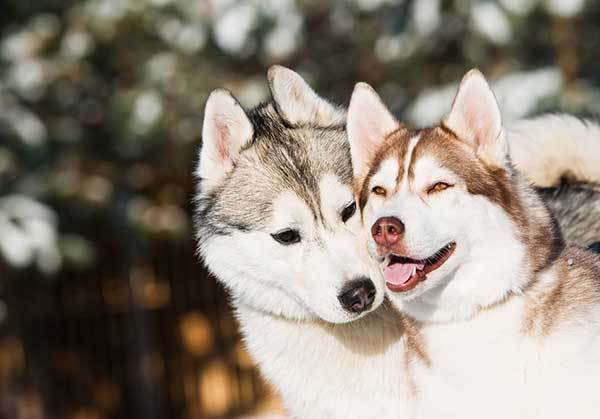One of the top considerations when looking for a dog to adopt is its temperament.
While dogs are such cute and adorable animals, nobody wants to deal with an animal that barks or growls without any apparent reason.
Like humans, all dogs are not created equal. Some can remain incredibly calm, cool, and collected even in the face of open aggression. Others have a rather short anger threshold, and will go on the offensive at the slightest hint of provocation.
If you’re considering acquiring a husky, you must have wondered to yourself, are huskies dangerous?
The best way to determine whether huskies are dangerous or not is to look at the dog’s temperament. So, are huskies considered an aggressive breed?
No, huskies are not aggressive dogs. On the contrary, these cute-looking furballs are usually calm, relaxed, affectionate, and playful. Huskies are notably famous for their love for the outdoors, and prefer to be taken on regular walks.
But apart from being exceedingly adventurous, huskies don’t demonstrate any serious aggressive tendencies.
Read on for more insights on the husky’s calm temperament, when the dog can turn aggressive, and other relevant questions pertaining to the topic.
More About Huskies
Are husky dogs aggressive?
As we’ve already mentioned, huskies are generally not aggressive. But to delve deeper into husky aggression and find out what influences their relaxed temperament, we shall begin by highlighting a bit about the dog’s history and appearance.
The Husky, also known as the Siberian Husky, is a medium-sized, working dog breed that’s part of the Spitz genetic family.
Huskies are distinguished from other dogs by their thickly-furred double coats which sport distinctive markings, and their erect triangular ears. These dogs bear close resemblance to the Alaskan Malamute, but are a bit smaller.
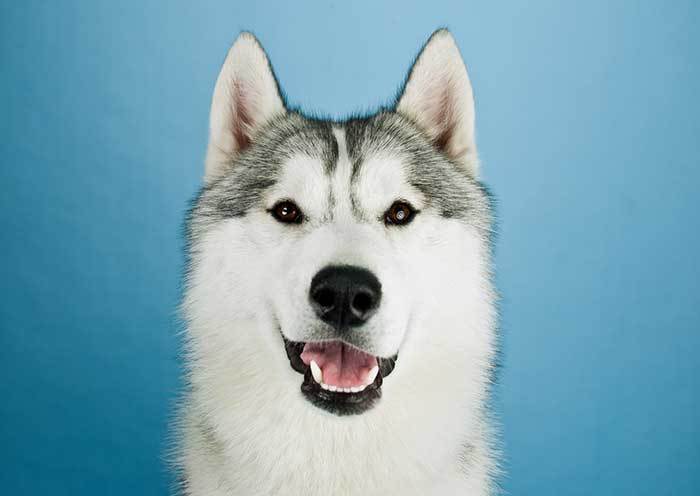
True to their name, the Siberian Huskies trace their origin in Northern Asia, in the Siberian region. The dogs were traditionally bred for sled-pulling by the Chukchi people of eastern Siberia. The Chukchi also kept huskies as guard and companion dogs.
Due to the chilly and unforgiving climatic conditions at the Siberian Arctic, husky ancestors were forced to be resilient and tenacious. Moving through the snowy landscapes required a great deal of energy and resilience, attributes that huskies have retained over the years.
It’s believed that the first husky was brought to the Americas some 12,000 years ago, around the beginning of the Holocene period.
In 1908, huskies were brought to Nome in Alaska, where they were used for sled-dog racing. Over the years, the dogs have spread to nearly all parts of the world, where they’re mostly kept as guard and companion dogs.
In fact, huskies happen to be some of the most widespread dog breeds, thanks to their resilience and tenacity. From the warm equatorial to the cool tropical and temperate climates, no region is too extreme for these dogs to live in.
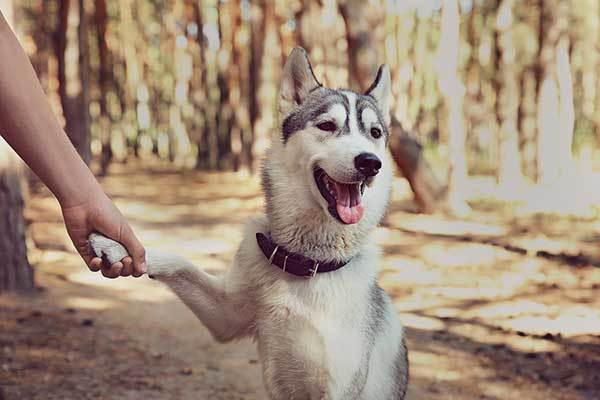
In terms of appearance, the Siberian Husky is famous for its double coat which is considerably thicker compared to that of most dogs.
The double-layered coat consists of a dense undercoat and a longer, short topcoat that’s mostly made up of guard hairs. This adaptation was necessary to cushion the dog from the chilly Arctic conditions, where temperatures can plummet to −76 °F.
The coats of Siberian Huskies come in various patterns and color combinations. The most common colors are black and white, followed by copper-red and white, pure white, white and grey, etc.
Husky eyes are almond-shaped and their noses range in color, depending on the color of the dog’s coat. For instance, gray huskies have black noses, black huskies have tanned noses, and copper-colored huskies have liver noses.
Husky tails are heavily furred and tend to curve upwards, almost forming a sickle shape.
As for the average size, most male huskies can stand up to 24 inches tall and weigh as much as 27 kilograms. Female huskies tend to be smaller than their male counterparts, with adults measuring 23 inches in height and weighing 23 kilograms.
Are Siberian Huskies Aggressive? A Review of Husky Personality
We’ve already observed that huskies were bred for sled-pulling, as well as for companionship and as guard dogs. However, the dog doesn’t display the possessive tendencies that are associated with most guard dogs.
In addition, huskies aren’t overly suspicious of strangers, neither are they aggressive to other pets. All of these qualities make them some of the most preferred family dogs. Added to their cute wolf-like appearance and insatiable desire to play, huskies are indeed the ideal dogs for most dog lovers.
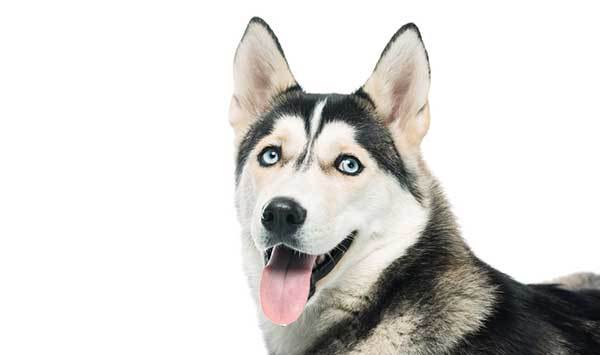
The dogs are also outgoing, which makes them appropriate for workout freaks. Each time you hit the road, your furry friend will always be there, panting behind you and offering you the much-required mental boost to continue with your jogging.
The following are more aspects of a husky’s behavior and personality that may help you determine whether adopting the dog is a great idea or not.
1. Family Dogs
Dog lovers who are keen on adopting huskies tend to ask, are huskies a good family dog?
One of the most admirable traits about huskies is that they tend to get along with nearly every member of the household. That explains why they’re particularly recommended for families living with kids.
However, due to their high energy levels, huskies tend to play a lot, and can play rough at times. So, that makes them unideal for very young kids.
The dog is most appropriate for a family with kids aged 3 years or older. Nonetheless, huskies respect every member of the household and understand where they fall in the family’s pecking order.
2. Athletic Canines
Siberian Huskies are resilient and tenacious. These dogs have loads of pent-up energies that they need to release every day. Therefore, they don’t do well in confined homes.
According to experts, husky owners must dedicate a minimum of one hour worth of aerobic exercise every day. Huskies have so much energy built up within them that a mere walk around the neighborhood is not enough for the dogs to fully release those energies.
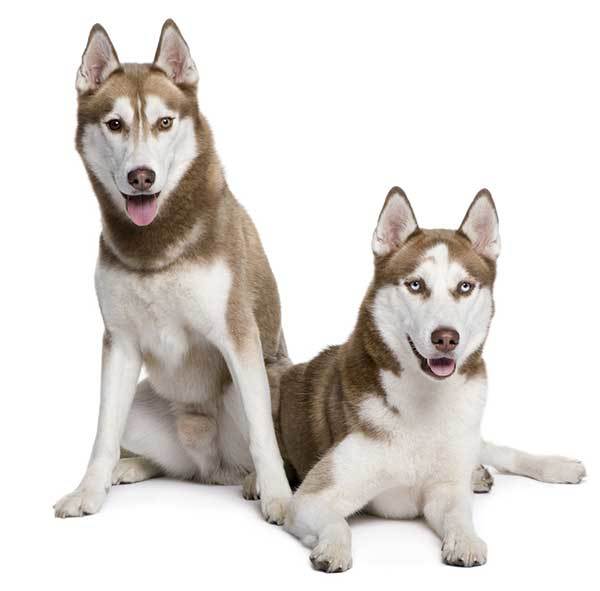
So, consider running, jogging, swimming, hiking, or playing high-energy games with your pooch. But what if you cannot commit the required amount of time to help keep your husky stimulated?
In that case, you might consider hiring a professional dog trainer to exercise the dog when you’re gone. If you aren’t able or willing to invest in a dog trainer, you should get your husky enough dog toys to keep it mentally and physically stimulated.
On the same breath, always be sure to leave lights and soft noises on while you’re away. These will help to keep separation anxiety at bay.
Some dog owners might discover that their huskies chew on furniture and may be tempted to ask, are huskies aggressive chewers?
No, they aren’t. But any dog that suffers separation anxiety may develop aberrant behaviors like obsessive chewing.
Another tip you can implement is to adopt an adult or older husky. The older the dog is, the mellower and less playful it is. However, remember that your husky will still require daily stimulation, so make provisions for the same either way.
- RICH FEEDING GAME – Look at the Big Orange Flower in the middle of the snuffle mat dog puzzle toys. Total 4 layers of orange petals can hide large…
- EXTRA FUN ATTRACTS YOUR PUPPY – We are extremely positive of our snuffle mat. But in order to provide more fun for lovely puppies, we set up 4…
- EXCELLENT RELEASE BUCKLE DESIGN – Have you ever bought a snuffle mat for your dog that want to develop good habits in your dog. But your dog likes…
Last update on 2025-01-13 / Affiliate links / Images from Amazon Product Advertising API
3. Pack Dogs
Another important attribute of the Siberian Huskies is that they’re pack dogs. Therefore, they love the company of people as well as other dogs.
Remember that huskies were bred for sled-pulling, and pulling of sleds required a bit of doggy teamwork. So, are huskies aggressive to other dogs?
Generally, your husky won’t mind coexisting with other dogs. You just need to ensure the dogs are well socialized and properly introduced to one another.
It’s important to note that all dogs exhibit a degree of territoriality. And if not properly introduced, fights can ensue. There are lots of puppy socialization classes that you can enroll your husky in, in case you don’t have time to offer the training yourself.
4. Strong Prey Drive
Despite the fact that they were not primarily bred for hunting, huskies have a very strong prey drive, especially towards smaller animals. That makes them unideal for families with hamsters, ferrets, rabbits, and other smaller pets.
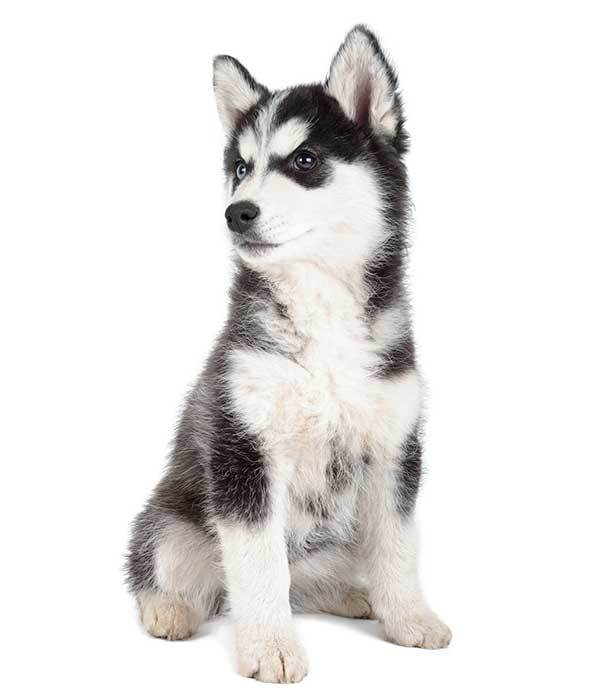
Are huskies aggressive to cats?
Cats love to be chased, and that may trigger huskies’ prey drive. Also, canines and felines are mortal enemies. So, your husky will unlikely get along with your cat unless you socialize it and introduce the animals carefully.
To be safe, feed your husky in a separate location from where you feed other smaller pets even when there seems to be some semblance of coexistence.
5. Highly Intelligence
Huskies are some of the most intelligent dog breeds. However, they’re also independent thinkers. So, they don’t’ follow commands blindly, and will often put up little shows of defiance. However, their intelligence makes them some of the easiest dogs to train.
When Can Huskies Be Aggressive?
Though they’re generally calm and mellow dogs, there are certain instances when your husky can get really aggressive.
The following are some of the common causes of the aggression in huskies.
1.Fear
When in fear, a husky will attempt to back away from the threat. However, if the dog feels cornered and lacks an escape route, it may bite.
But before biting, the dog will try to stare at you, growl, or bark. That’s when you may ask yourself, why does my husky growl at me?
2. Inter-dog Conflict
In a dog’s world, there are always conflicts to establish dominance and social hierarchies. These conflicts usually reach tipping point when neither dog is ready to defer to the other. Proper socialization may help to avert inter-dog conflicts.
3. Pain-induced Aggression
Any dog that’s in pain will exhibit a degree of aggression, especially if the dog suspects that you’re about to touch it on the tender place.
If your husky is in pain, watch out for symptoms like poor appetite, walking with a hunched back, and a tendency to self-isolate.
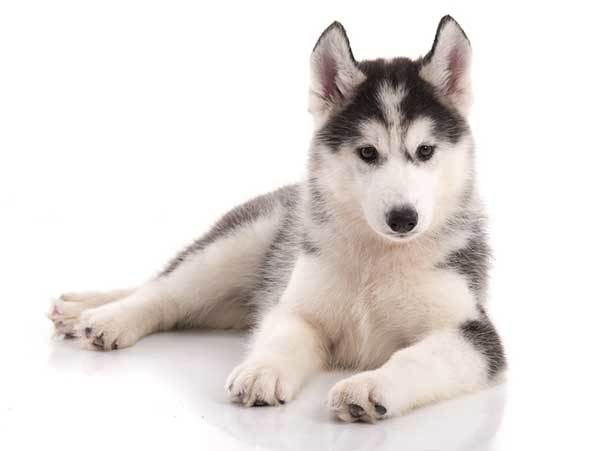
4. Predatory Aggression
This form of aggression occurs when your husky stares at a moving object intently. As we mentioned, these dogs have a strong prey drive.
If the moving object happens to be a smaller pet, the dog may chase the animal and even deliver a bite.
5. Excited Play
Some huskies tend to be aggressive when they’re overly excited. It’s one of the side effects of inadequate socialization or stimulation.
6. Possession Aggression
Also known as resource guarding, possession aggression results from your husky’s need to defend its food, patch, or other objects from a perceived threat. So, are huskies food aggressive?
Yes, your furball will jealously guard anything it considers its own.
First, the dog will stand over its “property” and try to bark or growl to keep the threat away. Persistence by the intruder may cause the dog to go on an all-out attack.
7. Territorial Aggression
All dogs are territorial by nature, and huskies are no exception. If the dog believes that its territory is threatened, it may confront the intruder.
When approaching a husky territory, the canine will first give you a mean stare and as you advance closer, the dog will growl and bare its teeth, a sure indication that it means business.
So, if you’ve always wondered to yourself, why do huskies stare at you, a possible reason is that the dog is trying to scare you away from its territory.
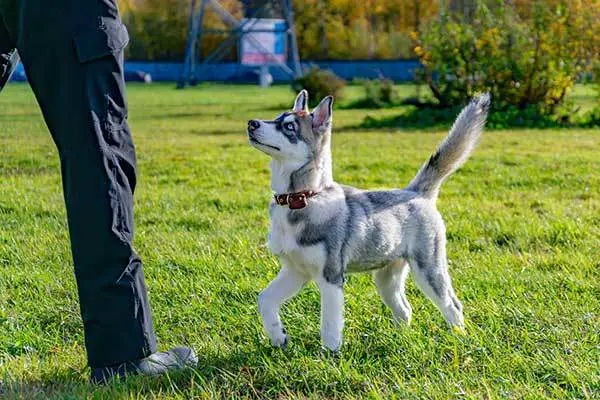
8. Protection Aggression
Huskies are pack animals, and pack members stick up for one another. Also, guarding is one of the roles that huskies were bred for.
So, some huskies may be a bit overprotective of their owners, who they also perceive to be their property.
9. Sex-related Aggression
Male huskies tend to compete for the attention of females in heat. And females in heat also vie for access to males.
Still on sex-related aggression, you may be wondering, are male huskies more aggressive than female ones? Or, are female huskies more aggressive?
Male huskies are generally more territorial than their female counterparts, and that mere fact makes them highly aggressive. So, compared side by side, an aggressive female husky is easier to handle than an aggressive male husky.
Sex-related aggression may also happen when there are only members of the same sex living together.
10. Redirected Aggression
This form of husky aggression happens when the dog directs its frustrations to another dog or pet, usually a smaller one, that has nothing to do with its woes.
When your husky cannot get what it wants from you and has no way to let you know, it will take out its frustrations on other smaller dogs or your cat. So, are huskies aggressive to small dogs?
Yes and as we’ve seen, aggression to smaller dogs is usually a result of redirected frustrations.
Signs of an Aggressive Siberian Husky
The following are some of the tell-tale signs of an aggressive husky;
- Growling, snarling, or giving deep, chesty barks;
- Mouthing;
- Bites, ranging from snaps and nips to skin-puncturing bites;
- Rigid posture, such as erect tail and ears, and piloerection;
- Lunging; or
- Muzzle punch.
How to Deal With an Aggressive Husky
The first way to deal with husky aggression is to ensure that you don’t acquire an aggressive husky in the first place. To do that, you might want to adopt your dog from a licensed breeder as opposed to a shelter home.
Reputable breeders usually keep detailed medical and family backgrounds of every dog in their facilities. That way, it’s easy to trace a dog’s history and find out if the canine has any physical or mental conditions that may affect its sociability.
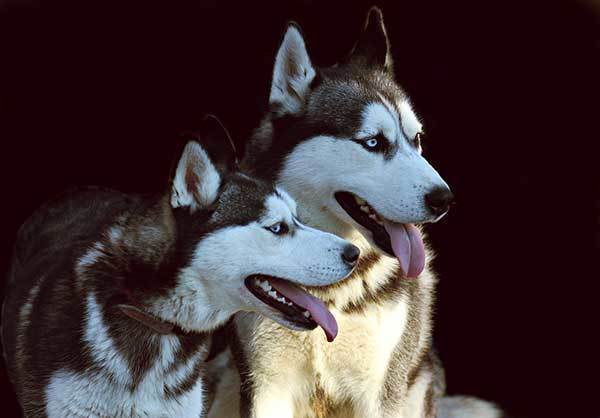
Some dog owners often ask, should I get a husky puppy or adopt an adult husky?
Experts advise adopting a puppy husky, considering how difficult it is to train an adult dog. Plus, an aggressive husky puppy is easier to deal with compared to an aggressive adult puppy.
However, adopting a young husky also means dedicating more time towards daily aerobic exercises. If your schedules won’t allow you to exercise with your dog every day, perhaps you should consider a much older husky.
If you’re already dealing with an aggressive husky, it’s reassuring to know that the dogs are easy to train, thanks to their remarkable intelligence.
The last of the many related questions on husky aggression is, are huskies more aggressive than pit bulls?
And the answer is a resounding NO. Huskies are considerably calmer and more relaxed compared to the more aggressive pit bulls.
Conclusion: So, How Aggressive Are Huskies?
For the most part, huskies aren’t aggressive at all. They are calm, relaxed, and playful. And even when your husky demonstrates a degree of aggression, you can always leverage the dog’s intelligence to train it to be calmer and mellower.
Checkout Our Favorite Dog Products
1. BEST PUPPY TOY
We Like: Snuggle Behavior Toy with Heart Beat & Heat Pack – Ideal toy for new puppies.
2. BEST DOG TRAINING PROGRAM
We Like: Doggy Dan The Online Dog Trainer – Stop any dog problem and raise the perfect puppy with The Online Dog Trainer.
3. Best Bone Broth for Dogs
We Like: (Solid Gold – Human Grade Bone Broth for Dogs) – Simmered Beef Bone Broth With Turmeric Provides A Nutrient-Dense And Flavorful Addition To Your Dog’s Meal + Rich In Natural Collagen From Beef Bones.
4. Best Multivitamin for Dogs
We Like: PetHonesty 10-For-1 Multivitamin – 10 Benefits in 1 Daily Treat – These Multivitamin Snacks combine a well-rounded blend of the most essential vitamins and supplements including glucosamine, probiotics, vitamins and omegas, for dogs’ overall daily health.
5. BEST DOG PUZZLE TOY
We Like: Outward Hound Interactive Puzzle Toy – Every dog loves chasing squirrels at the park. The Outward Hound Hide-a-Squirrel Puzzle Toy gives your dog the same feeling as though he was outdoors chasing live squirrels.

